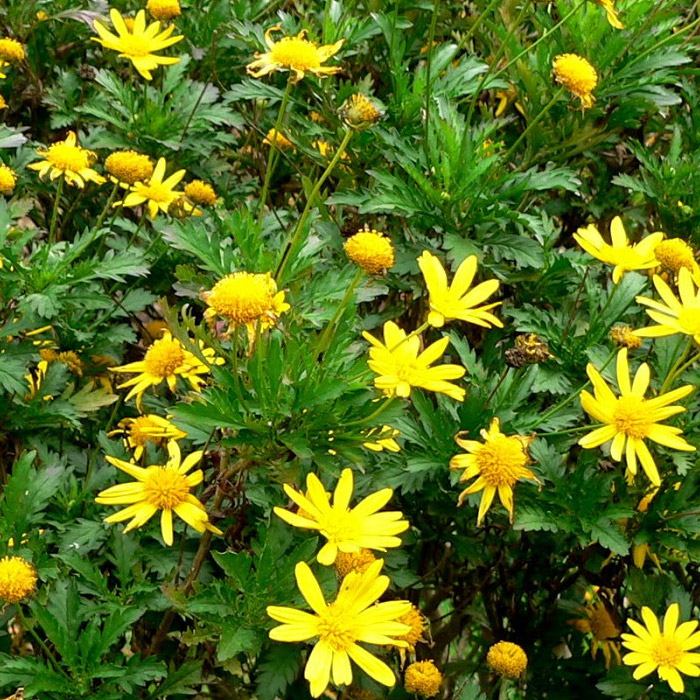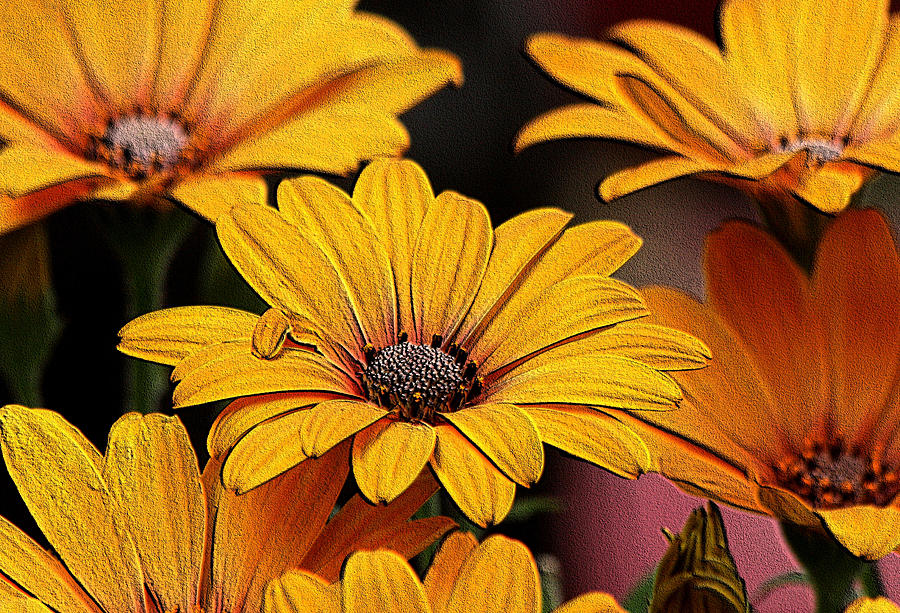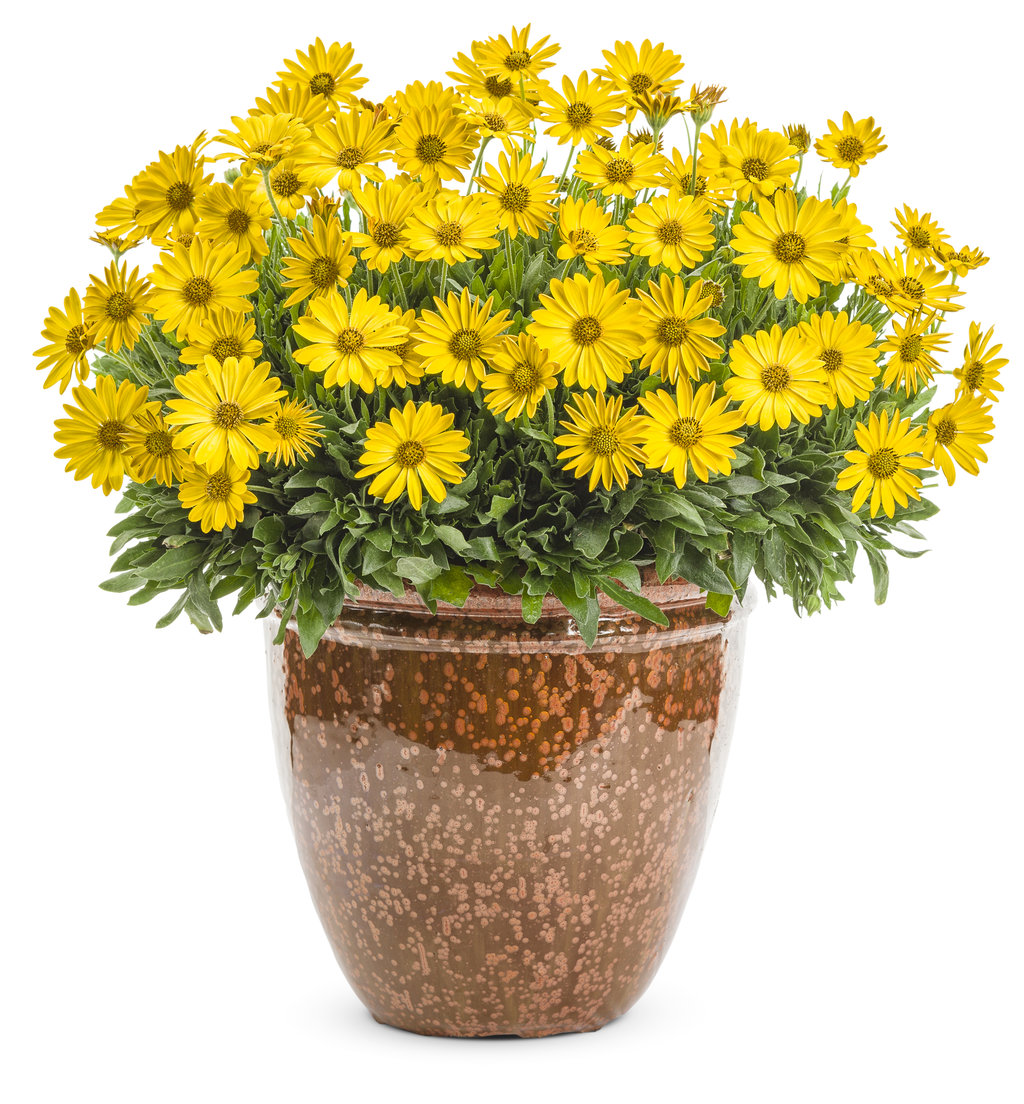Nyjer is a small, thin, black seed from the African yellow daisy . Depending on crops, import prices, and retailer options, however, it can also be one of the most expensive birdseeds. To lower the cost, many backyard birders prefer to offer Nyjer in limited quantities or will choose specialized feeders to ensure the seed is not accidentally spilled and wasted. Nyjer is also often found in finch mix or canary birdseed blends, often with sunflower chips or small millet seeds that also appeal to the birds that eat Nyjer.
Because these mixes have smaller proportions of Nyjer, they are often less expensive than pure thistle seed. Nyjer seed, also commonly known as thistle seed, is not related to the actual thistle plant but comes from the African yellow daisy . Native to Ethiopia, Eritrea, and Malawi and also grown in India, nyjer seed is a small, thin black seed that is high in oil and a nutritious source of energy for backyard birds. Native to Ethiopia, Eritrea and Malawi, niger seeds are also grown in India. Niger seeds resemble sunflower seeds in shape, but are smaller in size and black. It bears a fairly thick, adherent seed coat and can be stored for up to a year without deterioration.
Commercial niger seed is grown in Africa, India and other areas of southeast Asia, and the seed is imported around the world as a popular type of birdseed. Before it is imported, however, niger seed is sterilized by intense heat to prevent germination of any additional seeds that may be part of the mix. Treated niger seed may germinate but would typically be stunted, limiting its spread and offering less of a threat to native plants.
We are trusted producer, supplier and exporter of Best Quality Niger Seeds in Navi Mumbai, Maharashtra, India. The seed of the African yellow daisy Guizotia abyssinica, Niger is known by many names. Originally called Niger in reference to Nigeria and the plantA AcA A A A s origin, the name was trademarked as Niger in 1998 by the Wild Bird Feeding Industry to clarify pronunciation. Many backyard birders also call the seed thistle, but in fact Niger is not related to thistle plants or seeds. It is believed that calling the seed thistle may have become popular because goldfinches, which adore Niger, also feed on thistle and use thistle down to construct their nests. The popular finch seed Niger is native to the highlands of Ethiopia.
Niger is in the composite family and is quite closely related to the popular garden plants Cosmos . It has yellow Cosmos-like flowers and grows up to 6 feet tall. The seeds contain up to 40% oil and in Ethiopia, India and Myanmar it is an important oil seed crop. Ethiopian immigrants possibly introduced the seed to India around 3000BC along with other important food plants such as Millet.
Niger supplies 50% of the vegetable oil used in Ethiopia and 3% in India. It is also heated and made into a paste and eaten directly. The meal left after oil extraction is used as a livestock food. ; Niger seeds belongs to group of the oilseeds because of its fat content of about 35 %.
Other popular names are Niger seeds or thistle and one can find these tiny seeds in many winter bird food mixtures. But also many pet birds such as budgies like to eat Niger seeds. The plant that produces these tiny seeds is the African yellow daisy which is native to Ethiopia and other countries in this part of Africa.
Many common seed mixtures for budgies do not contain Niger seeds. Due to the fact that they contain about 18 % of proteins, these seeds are quite healthy and therefore adding them to your bird's food is a good idea. Please note that many small pet birds first have to get used to nyjer seeds.
The seed of the African yellow daisy, Guizotia abyssinica, Nyjer is known by many names. The birdseed was originally called niger in reference to Nigeria and the plant's geographic origin. The name was trademarked as Nyjer ® in 1998 by the Wild Bird Feeding Industry, however, to clarify proper pronunciation (NYE-jerr). Many birders also call it thistle seed, but Nyjer is not related to thistle plants, flowers, or seeds. It is believed that calling the seed thistle may have become popular because goldfinches, which adore Nyjer, also feed on thistle and use thistle down to construct their nests. To attract them to your yard feed them black oil sunflower seeds in a tube or hopper feeder.
They will also eat Niger seed from thistle feeders, though not as readily as goldfinches. These are often marketed as "finch feeders." House Finches are very attracted to water, too. Nyjer seed, also known as niger seed or thistle seed, is a high oil content seed used frequently in backyard bird feeders to attract a variety of finches. The name Nyjer is a registered trademark of the Wild Bird Feeding Institute, created as a way to differentiate it from the term niger which is offensive when mispronounced. To attract birds by offering Nyjer, select appropriate bird feeders that have small mesh or tiny feeding ports to release the seed without spilling.
Either soft mesh sock-style feeders or more durable metal mesh feeders can be suitable. Birders who have not offered Nyjer before may choose mixed seed that includes Nyjer first to help the birds get accustomed to the new seed. Tricks to attract birds to a new feeder can also be useful for introducing birds to Nyjer. Birds that prefer Nyjer are seed-eating bird species . Niger seed is technically a dry single-seeded fruit called an achene, and is known by a variety of different names including nyger, ramtil, inga, and black seed.
It is also sometimes referred to as thistle seed although this is incorrect as the plant is not a thistle. The name came about because when the seed was initially marketed as bird food, companies took advantage of finches' natural love of teasel and thistle seeds. Nyjer is a black, thin, small seed from the African yellow daisy . With no relation to the thistle plant, Nyjer is aka "thistle seed." It's high in oil and nutritious source of energy for backyard birds. Birds throw out the seeds from the feeder they don't want in order to get to the seeds they do want.
Most birds at the feeder love black oil sunflower seeds. Nyjer thistle is a small black seed favored by birds such as finches, juncos and pine siskins. Quality nyjer thistle is typically heated so it won't sprout. If a few plants do sprout, they rarely grow to a mature plant in North America.
To attract finches, use a tube hanging feeder filled with black nyjer seed. Although sometimes also called thistle or niger, the nyjer seed sold today is not a thistle at all. Rather, it is a daisy-like plant, known as Guizotia abyssinica. Nyjer is an annual flower with bright, yellow-orange flower heads that turn into seed pods. Wet seed, particularly oily seeds, such as black oil sunflower seeds, hulled sunflower seed, and Nyjer, clumps. Large clumps can clog feeding ports so birds are not able to access seed as readily.
Wet seed can also cause oily stains, making the feeding station less aesthetically pleasing. Nyjer is also often found in finch mix or canary birdseed blends, often with sunflower chips or small. It is a useful crop in the tropics because it is relatively pest free and can be grown in clay and waterlogged soils. As the seeds are so small, specialized bird feeders are manufactured for niger seed. In the United Kingdom the seeds attract finches and siskins.
They typically have smaller, sharply-pointed bills that can easily manipulate such tiny seeds to crack shells and extract the rich seeds. These foraging habits help them feed on the natural seeds of flowers, which could be at unusual angles or waving in the wind when the birds are eating. Still, other bird species that feed on Nyjer are ground-feeding birds that will forage in leaf litter after flowers have shed their seeds.
These larger seed-eating birds will also gather beneath specialized Nyjer feeders and sift through discarded shells for any seeds that have been spilled. Niger seedThe seed of the African yellow daisy Guizotia abyssinica, is known by many names. Commercial Niger seed is grown in Africa, India and other areas of southeast Asia. In some areas the oil and seed is eaten in different recipes, including curries, chutneys and gruel, and it has several medicinal uses as well. Cattle refuse to eat the green plant, but accept it as silage.
Most types of niger seed are short-day plants with only few day-length-insensitive individual plants. Niger seed is mostly indifferent to the crop that it follows in a rotation, except for another niger seed crop and maize, which have an unfavourable influence. Its dense growth and specific root exudates allow niger seed to compete well with weeds. Traditionally, niger seed is not directly fertilized, but is grown on residual soil fertility. Manure (4–5 t/ha) is also used, sometimes combined with 10–20 kg N/ha.
Niger seed is in general not seriously affected by diseases or pests. Incorporation of cowpea biomass gave positive results on niger seed. Black thistle bird seed is known as Niger, Nyger or Nyjer seed. The plant that produces the seed is not related to a thistle, but the tiny seed resemble the seeds of the thistle plant. The seeds are widely cultivated in Asia and Africa for their oil content, as a livestock feed and for export as a bird seed feed.
When putting out niger seed or any bird food make sure it is available at peak feeding time such as dawn and dusk. Keep all bird feeders away from predators such as cats and make sure the feeding stations are kept clean to prevent the spread of disease. As with all bird food store it in a cool, dry place and ensure that you use it up before the sell-by date.
Birders can make the seed even more affordable by adding Nyjer to a birdseed mix rather than feeding it straight. Another popular option is to offer Nyjer in specialized feeders to prevent spills and restrict access to the seeds to only the most desirable birds. While this seed has relatively wide appeal in the backyard, some birds won't give it a second glance. Orioles, waxwings, and other strongly frugivorous species will not pay any attention to Nyjer, and nectar-loving birds such as hummingbirds will also ignore a Nyjer feeder. Birds with larger, less adept bills such as cardinals, starlings, and grosbeaks cannot easily munch on thistle seed, and they are more likely to use other feeders and try other seeds instead.
If any of these are the types of birds a backyard birder wants to attract, a Nyjer feeder is not necessary. Plant that bird seed, it contains millet (the small roundish white/tan seeds), sorghum and oil sunflower seeds, all are non-gmo products so no worries about that. Niger seed is an herb that grows annually and is grown for its edible seeds.
People often comment that if the birds can eat the seed, it should be good enough for humans. Niger seed is a small black seed that procudes the Guizotia flower, a pretty and dainty yellow bloom that is native to Africa. Because of this composition, Nyjer is especially popular as a winter bird food, when birds require foods with more oil and a higher calorie content so they can store fat to survive colder temperatures.
The high protein content in Nyjer is also useful for regenerating feathers when birds molt in the late fall and early spring. Niger Thistle is the most popular bird seed for goldfinches and pine siskins. Our most popular backyard blend concocted by our former Wild About Birds owner Peggie Flierl! Contains black oil sunflower seed, sunflower chips, white millet, and peanut pieces. Originally called Niger in reference to Nigeria and the plant's origin, the name was trademarked as Niger in 1998 by the Wild Bird Feeding Industry to clarify pronunciation.
Keep in mind that the birdseed won't grow weeds in your yard if it doesn't reach the ground. Putting a tray under your bird feeder to catch overflowing seeds can prevent the problem of weed growth. Although birds may be messy eaters, squirrels are sometimes a bigger problem. Native to Ethiopia and Malawi, niger seeds are also grown in India. Commercial Nyjer is grown in Africa, particularly Ethiopia and Kenya, as well as in India, Nepal, and Myanmar. In some areas the oil and seed are eaten in different recipes, including curries, chutneys, and gruel, and Nyjer has several medicinal uses as well.
The most widely known use is for feeding birds, however, and the seed is imported around the world as a popular type of birdseed. Before it is imported, however, Nyjer seed is sterilized by intense heat to prevent germination of any additional seeds that may be part of the mix. This is required by many countries to prevent the introduction of invasive weeds or other unwanted plants into the environment.
Treated Nyjer may germinate but would typically be stunted, limiting its spread and offering less of a threat to native plants. Another thing is that the European spear thistle, Cirsium vulgare, gets lots of negative press but it's actually a very valuable source of food for pollinators and birds. The one thistle that is to be avoided is the perennial small-flowered Cirsium arvense. It's erroneously called Canada thistle but it's an Old Worls species. That one is a big problem because it spreads very rapidly underground.
It also doesn't provide nearly the wildlife value of a large-flowered biennial thistle like the other three I mentioned. Cirsium vulgare isn't native but, aside from being spinier, it's very similar to the native discolor species in terms of its wildlife value. I have had more birds and butterflies on vulgare thistles than anything else, although Tithonia is a close second.
Cosmos and oil sunflowers aren't even close, especially since our deer eat the plants and birds pull the seeds out well before they're ripe/mature. Another thing is that the European spear thistle, Cirsium vulgate, gets lots of negative press but it's actually a very valuable source of food for pollinators and birds. Nyjer seed is commonly known by several names, including niger and thistle, even though it is not related to the thistle plant or flower.
The name "Nyjer" was trademarked in 1998 by the Wild Bird Feeding Institute to prevent mispronunciation of niger. The seed was originally named after its geographic origin on Nigeria. The seed is from the African yellow daisy , and in Africa is often called black seed or inga seed. The type of bird seed that individuals are placing into their bird feeders controls the type of plants that will grow from bird seed. However, if you are feeding a mixed bird seed containing Millet and Milo, then something that looks like grass will grow. Nyjer Seed is a teeny-tiny, high-oil content seed (~40%) mostly favored by finches and siskins.




























